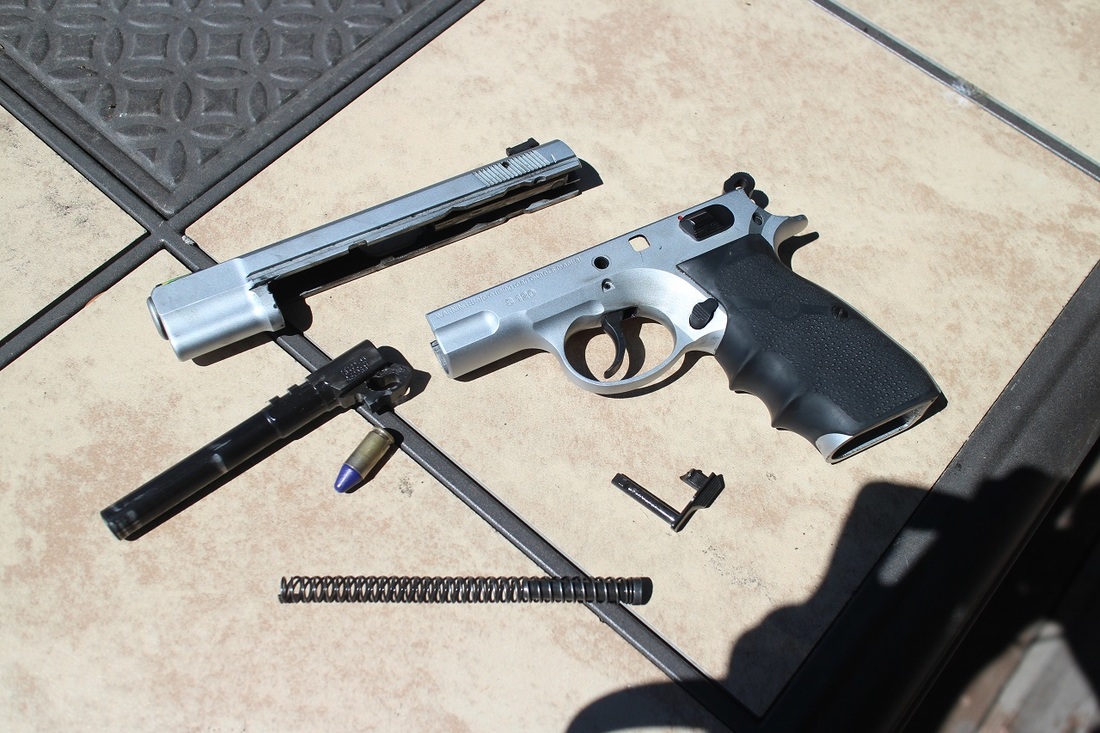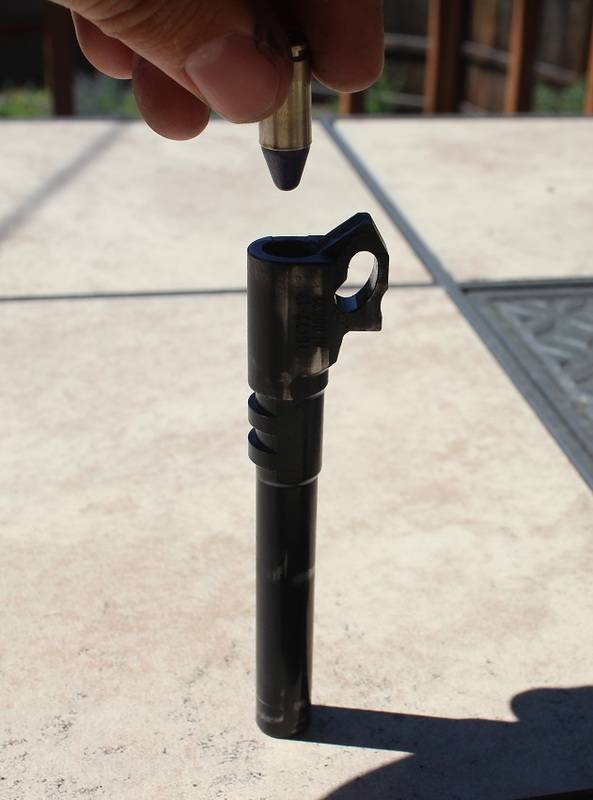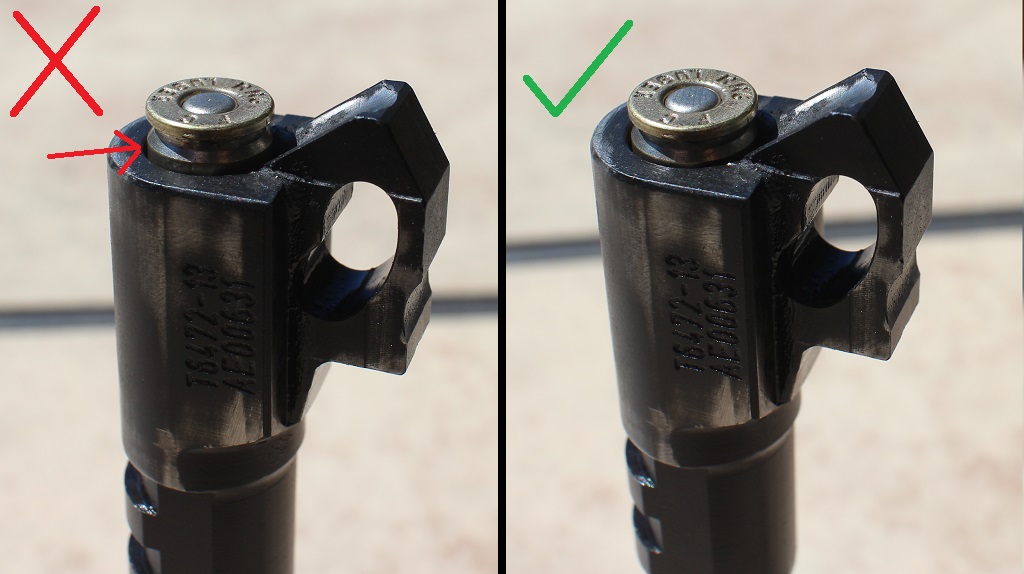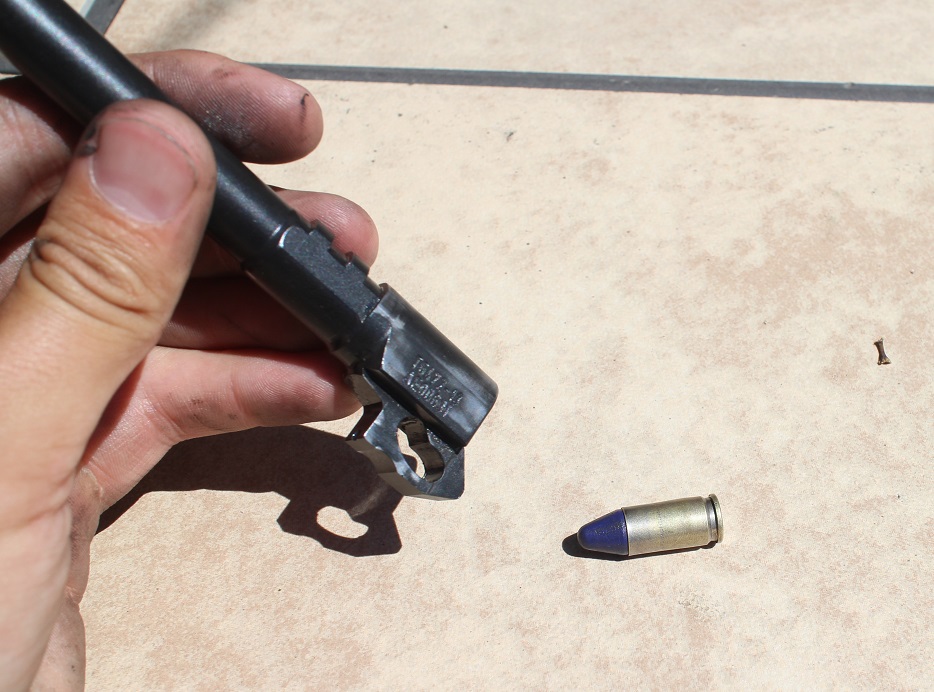The Plunk Test:
This test is basically just using your actual firearm's barrel as a cartridge gauge to determine whether your ammo will function well or not.
Step 1 - Disassemble firearm
Step 1 - Disassemble firearm
Step 2 - Insert live or dummy cartridge into chamber to test for length
Step 3 - A good cartridge should 'plunk' right into the chamber and fully seat. A bad cartridge will not seat fully.
Step 4 - Remove cartridge, it should either fall out or take very little effort to pull out.
This is the first article in a short series about making the most reliable and accurate ammo possible in your specific handgun.
We'll start by talking about the plunk test. This is a test where you drop a loaded (or dummy) cartridge into your pistol's chamber as shown above. If the cartridge 'plunks' down into the chamber, and can be pulled out with no effort, you know that round will chamber and fire reliably. If it does not fully seat, then your ammo may be too long! Sometimes the cartridge will fully seat with a light push, but pulling the round back out of the chamber requires some effort, and this means your bullet is jamming into the forcing cone or touching the rifling in the barrel. It could also be that the case wasn't properly resized and is too big, or an extremely tight 'match grade' barrel may not like oversized bullets.
You'll find many of the top competitive shooters are using ammo which is not loaded to an exact recipe according to one of the many load manuals out there. This is possible because they have A LOT of experience trying out different loads until they find one that is both safe to shoot, and ideal for performance in that particular gun. The end result is a load which may be under or over the recommended powder charges, and with a Cartridge Overall Length (C.O.A.L) which does not match what's listed in the manuals.
Just like precision rifle shooters will often try to load the longest possible cartridge to squeeze every bit of accuracy out of their shots, pistol shooters can use a similar technique to find the ideal C.O.A.L for their ammo.
So, to get back to the plunk test, if your ammo is not fully chambering in your barrel, shorten your round in your seating die little by little until it successfully passes the plunk test. I personally load my ammo too long when first developing a load for a new gun, and shorten it until I find this state of equilibrium.
Also, when you do finally pass the plunk test, it's always a good idea to shorten the C.O.A.L just a tiny bit more. Most presses do not seat to the exact same seating depth every single time, so give yourself a little bit of margin for error.
We'll start by talking about the plunk test. This is a test where you drop a loaded (or dummy) cartridge into your pistol's chamber as shown above. If the cartridge 'plunks' down into the chamber, and can be pulled out with no effort, you know that round will chamber and fire reliably. If it does not fully seat, then your ammo may be too long! Sometimes the cartridge will fully seat with a light push, but pulling the round back out of the chamber requires some effort, and this means your bullet is jamming into the forcing cone or touching the rifling in the barrel. It could also be that the case wasn't properly resized and is too big, or an extremely tight 'match grade' barrel may not like oversized bullets.
You'll find many of the top competitive shooters are using ammo which is not loaded to an exact recipe according to one of the many load manuals out there. This is possible because they have A LOT of experience trying out different loads until they find one that is both safe to shoot, and ideal for performance in that particular gun. The end result is a load which may be under or over the recommended powder charges, and with a Cartridge Overall Length (C.O.A.L) which does not match what's listed in the manuals.
Just like precision rifle shooters will often try to load the longest possible cartridge to squeeze every bit of accuracy out of their shots, pistol shooters can use a similar technique to find the ideal C.O.A.L for their ammo.
So, to get back to the plunk test, if your ammo is not fully chambering in your barrel, shorten your round in your seating die little by little until it successfully passes the plunk test. I personally load my ammo too long when first developing a load for a new gun, and shorten it until I find this state of equilibrium.
Also, when you do finally pass the plunk test, it's always a good idea to shorten the C.O.A.L just a tiny bit more. Most presses do not seat to the exact same seating depth every single time, so give yourself a little bit of margin for error.





 RSS Feed
RSS Feed